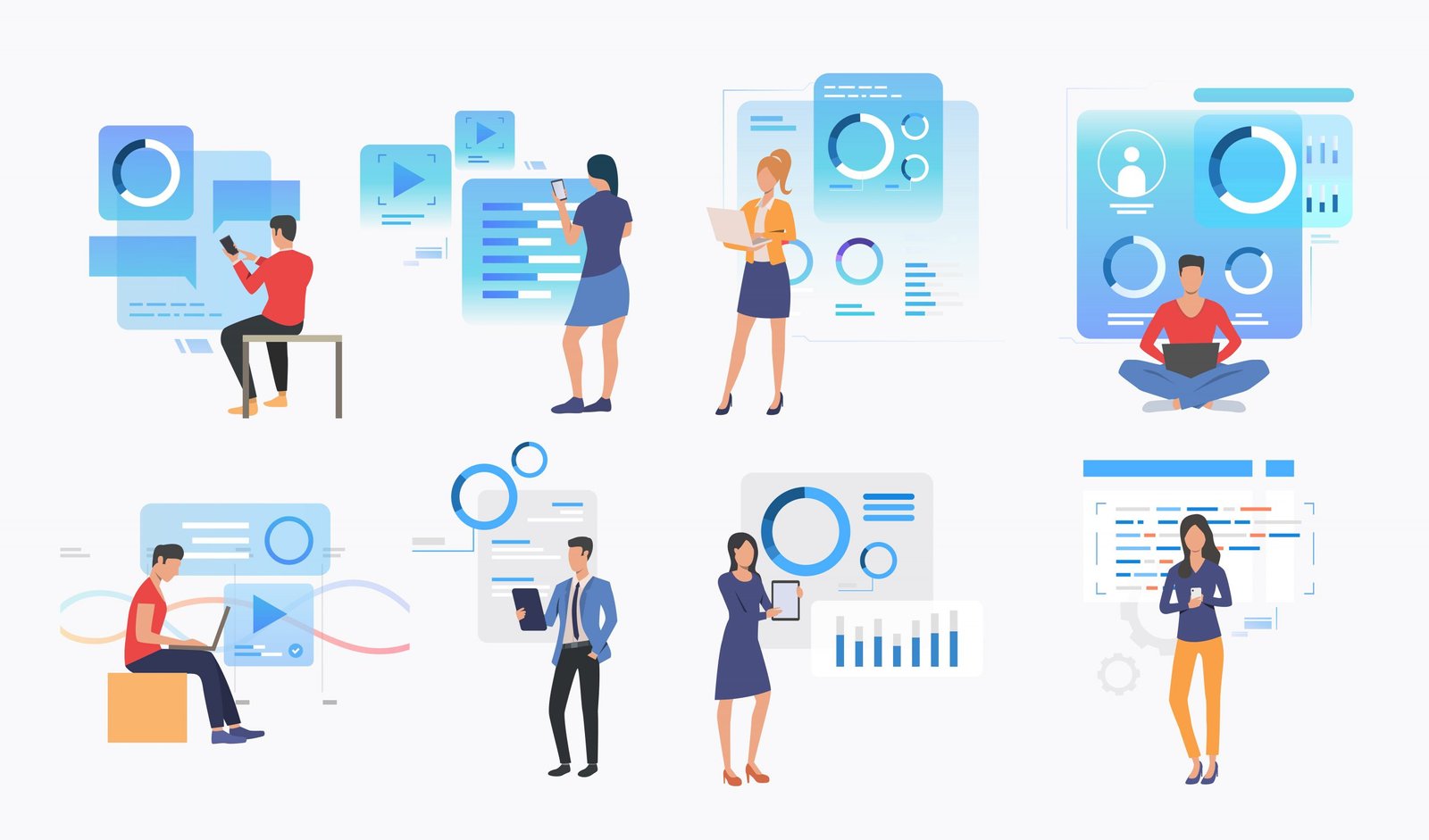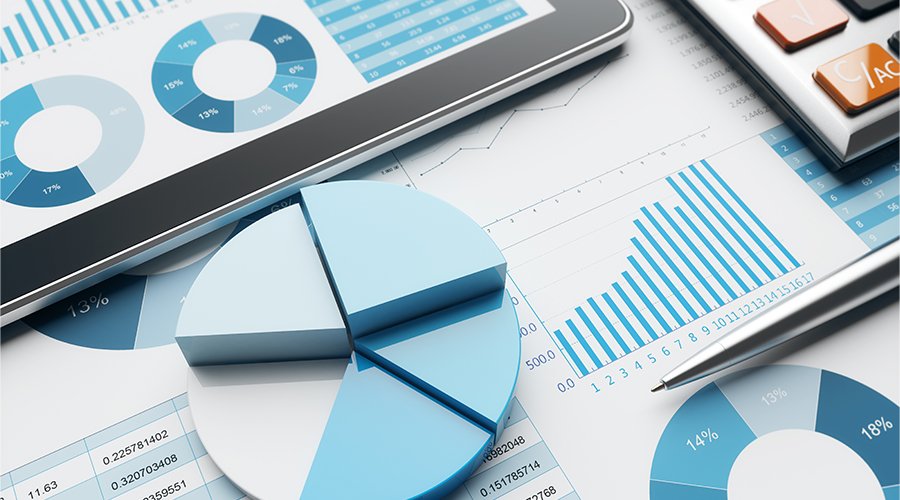Table of Contents
Toggle10 Game-Changing Business Analytics Strategies You Need in 2025

Introduction: Why Business Analytics Matters in 2025
In today’s digital era, Business Analytics is no longer optional—it’s essential. Companies that rely on data-driven insights are outpacing their competitors and making smarter decisions. As we enter 2025, it’s time to embrace modern strategies that leverage advanced analytics, automation, and AI. This guide reveals ten cutting-edge Business Analytics strategies that can future-proof your business.
1. Predictive Analytics for Smarter Forecasting
Predictive analytics uses historical data and machine learning to forecast trends. Whether it’s predicting customer churn or inventory demand, this Business Analytics method helps businesses stay proactive and agile.
2. Real-Time Data Processing and Decision Making
Gone are the days of waiting days for reports. Modern Business Analytics platforms offer real-time dashboards that allow immediate action. Instant data processing enables teams to respond to challenges as they happen.
3. AI-Powered Business Intelligence Tools
AI integration in Business Analytics enhances data interpretation. Tools like Power BI, Tableau, and Google Looker now embed AI features to automatically identify patterns and recommend actions.
4. Data Visualization for Instant Insight
Interactive charts, graphs, and dashboards make complex data simple. With Business Analytics, decision-makers can interpret data at a glance—no coding or deep technical skills needed.
5. Customer Behavior Analytics for Personalization
Understanding what your customers want is vital. Behavioral Business Analytics helps you tailor marketing, product recommendations, and customer service to boost satisfaction and retention.
6. Leveraging Big Data for Competitive Advantage
Big Data isn’t just a buzzword. Businesses using large datasets for Business Analytics can uncover hidden opportunities, improve operational efficiency, and gain an edge in competitive markets.
7. Automating Reports and Dashboards
Manual reporting is time-consuming. Business Analytics tools now automate the creation and distribution of reports, freeing up valuable time and reducing human error.
8. Cloud-Based Business Analytics Solutions
With remote work and global collaboration on the rise, cloud-based Business Analytics platforms offer secure, scalable, and accessible solutions for data storage and analysis.
9. Data Governance and Compliance Best Practices
With increased data use comes increased responsibility. Business Analytics in 2025 must include proper governance, ensuring data privacy, accuracy, and compliance with global regulations like GDPR.
AI-Powered Business Intelligence Tools: Transforming Data into Decisions

AI-Powered Business Intelligence Tools: Transforming Data into Decisions
In the fast-paced world of modern business, data has become the most valuable asset. But data alone is not enough. To make effective decisions, organizations need tools that can transform raw data into actionable insights. That’s where AI-powered Business Intelligence (BI) tools come into play. These advanced solutions go far beyond traditional dashboards and reports—they learn, predict, and guide.
What Are AI-Powered Business Intelligence Tools?
AI-powered BI tools are software platforms that combine traditional Business Intelligence with artificial intelligence (AI) technologies such as machine learning, natural language processing (NLP), and predictive analytics. They can automatically analyze large volumes of data, uncover patterns, detect anomalies, and even generate insights without human intervention.
Unlike traditional BI systems, which rely on historical data and manual analysis, AI-powered tools continuously learn from data streams, offering real-time insights and predictive recommendations. This capability helps businesses react quickly and make smarter decisions.
Key Features of AI-Powered BI Tools
1. Automated Data Discovery
AI can scan vast datasets to detect trends, relationships, and outliers that human analysts may overlook. This helps organizations uncover hidden opportunities or risks faster than ever before.
2. Natural Language Queries
Many platforms allow users to ask questions in plain English. Instead of needing technical knowledge or SQL, business users can type queries like “What were our top-selling products last quarter?”—and get instant, visual responses.
3. Predictive and Prescriptive Analytics
AI doesn’t just tell you what happened; it predicts what will happen and even suggests what you should do next. This functionality adds a proactive layer to your Business Analytics strategy.
4. Real-Time Decision Making
These tools work with real-time data feeds, meaning decisions are no longer based on outdated reports. With real-time analytics, companies can respond immediately to customer behavior, supply chain changes, or market shifts.
5. Customizable Dashboards and Alerts
AI tools can personalize dashboards based on user roles, and send automated alerts when key metrics cross thresholds—making them more responsive and relevant.
Benefits for Modern Businesses
Faster Decision-Making
AI drastically reduces the time needed to generate insights. Executives and teams can act on data immediately, which is vital in today’s competitive landscape.
Improved Accuracy
With machine learning models that learn and refine over time, AI-powered tools can improve the precision of forecasts and recommendations—a critical aspect of modern Business Analytics.
Increased Productivity
AI takes over repetitive tasks like report generation and data cleaning, allowing analysts to focus on strategic work instead of data prep.
Democratization of Data
These tools make data accessible to non-technical users. This means that marketing managers, HR professionals, and financial analysts can all use AI insights without depending on data scientists.
Leading AI-Powered BI Platforms in 2025
Some of the top AI-integrated BI platforms include:
Microsoft Power BI – Offers AI visuals, text analytics, and integration with Azure Machine Learning.
Tableau with Einstein AI (Salesforce) – Delivers predictive insights and recommendations powered by machine learning.
Google Looker – Combines data modeling with AI features from Google Cloud.
Qlik Sense – Uses AI to enhance data storytelling and user suggestions.
These platforms are constantly evolving and becoming more user-friendly, helping businesses embed Business Analytics deeply into their daily operations.
The Future of Business Intelligence Is AI
AI-powered BI tools are not just a trend they are the future of Business Analytics. As data continues to grow in volume and complexity, organizations must embrace smarter solutions to stay ahead. These tools don’t just simplify data interpretation they elevate strategic thinking and enable proactive decision-making.
By implementing AI-powered BI platforms, businesses can transform data into their most powerful competitive asset streamlining operations, predicting outcomes, and driving long-term growth
Data Visualization for Instant Insight

Data Visualization for Instant Insight
In the fast-moving digital economy, businesses rely on data to drive strategy, measure performance, and make decisions. However, raw data in spreadsheets and databases can be overwhelming and hard to interpret. This is where data visualization becomes a powerful tool in the Business Analytics process.
Data visualization is the graphical representation of information—charts, graphs, dashboards, and maps that turn complex data sets into intuitive visuals. It enables decision-makers to spot trends, identify outliers, and understand relationships within data at a glance. When integrated with Business Analytics platforms, data visualization empowers users to derive instant insights without needing advanced technical skills.
For example, instead of sifting through endless sales figures, a simple bar chart can instantly show which product lines are outperforming or underperforming. Real-time dashboards can alert managers to sudden changes in customer behavior or supply chain disruptions. With Business Analytics tools like Tableau, Power BI, or Google Looker, these visualizations can be built dynamically, filtered interactively, and updated automatically.
The real strength of data visualization lies in its ability to communicate data clearly and effectively. It democratizes information across departments from marketing to finance to operations allowing every team to make smarter, faster decisions.
In 2025, businesses that combine strong Business Analytics foundations with impactful data visualization will be the ones turning data into a strategic advantage. Visual insights aren’t just helpful they’re essential for success in a data-driven world
Customer Behavior Analytics for Personalization

Customer Behavior Analytics for Personalization
Understanding what drives customer decisions is crucial for business growth. In today’s digital-first environment, companies must go beyond generic marketing and create personalized experiences tailored to individual preferences. That’s where Customer Behavior Analytics, a vital part of Business Analytics, comes into play.
Customer Behavior Analytics involves tracking and analyzing how users interact with your brand—whether it’s browsing your website, opening emails, making purchases, or engaging with social media. By applying Business Analytics tools to these data points, businesses can identify patterns, predict future actions, and segment audiences based on interests and behaviors.
For example, an e-commerce platform can use analytics to suggest products based on browsing history or past purchases. A streaming service might recommend shows that align with a user’s watch habits. These personalized experiences increase engagement, customer satisfaction, and, ultimately, revenue.
With AI-driven Business Analytics platforms, personalization becomes even more powerful. These tools analyze large volumes of customer data in real time, enabling businesses to deliver the right message, to the right person, at the right moment. Whether it’s a tailored email campaign or a dynamic landing page, behavior-based targeting leads to higher conversion rates.
In 2025, successful businesses will not treat customers as data points but as individuals. By leveraging Business Analytics to understand behavior, personalization becomes scalable, efficient, and deeply effective. It’s not just about knowing your customers—it’s about knowing how to serve them better, every single time
Leveraging Big Data for Competitive Advantage

Leveraging Big Data for Competitive Advantage
In today’s hyper-competitive marketplace, the ability to make data-driven decisions is no longer optional it’s essential. Businesses that leverage Big Data through advanced Business Analytics are not just surviving—they’re thriving. The power of Big Data lies in its volume, variety, and velocity. When used strategically, it helps businesses gain insights that lead to smarter decisions, faster innovation, and stronger customer relationships.
Big Data includes everything from customer transactions and social media activity to sensor logs and mobile interactions. But raw data alone is meaningless. That’s where Business Analytics comes in. By applying analytics to massive datasets, organizations can uncover hidden patterns, predict trends, and identify growth opportunities before the competition does.
For example, retailers can use Big Data to anticipate shopping behavior, optimize inventory, and personalize promotions. Financial institutions can detect fraud in real time. Healthcare providers can improve patient outcomes through predictive modeling. These aren’t just theoretical benefits they’re real-world advantages gained through strategic Business Analytics.
What sets high-performing businesses apart is not how much data they collect, but how well they use it. With the right Business Analytics tools, companies can turn Big Data into a valuable asset, one that fuels innovation and secures a long-term competitive edge.
As we move further into 2025, leveraging Big Data effectively will be one of the most critical factors in determining who leads and who lags. Businesses that invest in data analytics today are building the foundation for tomorrow’s success.
Automating Reports and Dashboards: Saving Time, Gaining Insights

Automating Reports and Dashboards: Saving Time, Gaining Insights
In the fast-paced digital economy, manual data reporting is quickly becoming obsolete. Businesses now require real-time access to performance metrics to make timely decisions. That’s where automating reports and dashboards becomes a game-changer—streamlining workflows and accelerating insight delivery through modern Business Analytics solutions.
Automated reports eliminate the need for repetitive, manual data pulling. Instead of creating the same charts every week, teams can use Business Analytics platforms like Power BI, Tableau, or Looker to schedule and auto-generate dynamic dashboards. These dashboards update in real time, pulling fresh data from multiple sources—be it sales figures, customer behavior, or supply chain stats.
This automation ensures that stakeholders always have access to the most accurate and up-to-date information, enabling data-driven decision-making at every level. Teams can set alerts for key performance indicators (KPIs), allowing them to react immediately to changes rather than wait for the next reporting cycle.
Incorporating automated dashboards into your Business Analytics strategy also boosts efficiency. Analysts spend less time on data prep and more time interpreting results and delivering strategic insights. It reduces human error and ensures consistency across departments.
As organizations continue to scale, automation in Business Analytics is no longer a luxury—it’s a necessity. It empowers businesses to focus on growth and innovation while letting intelligent systems handle the heavy lifting of data visualization and reporting.
Cloud-Based Business Analytics Solutions: Scalable, Smart, and Secure

Cloud-Based Business Analytics Solutions: Scalable, Smart, and Secure
As businesses generate and consume data at an unprecedented rate, the need for flexible, accessible, and secure data tools is growing rapidly. Cloud-based Business Analytics solutions offer a modern way to collect, process, and visualize data without the limitations of traditional on-premise systems.
These solutions leverage the power of the cloud to allow real-time collaboration, scalability, and seamless data integration from anywhere in the world. With teams often working remotely or across different geographies, Business Analytics tools hosted on cloud platforms ensure that insights are always within reach—no matter the location or device.
Platforms like Microsoft Power BI, Google Looker, and Amazon QuickSight offer intuitive interfaces, interactive dashboards, and AI-powered analytics, all while ensuring robust data security. With automatic updates and backups, businesses no longer need to worry about system maintenance or downtime.
Cloud-based Business Analytics also supports faster decision-making by enabling live data feeds and on-demand reporting. This means organizations can react quickly to market changes, track KPIs in real time, and uncover new growth opportunities with ease.
Furthermore, these platforms are cost-efficient. Companies pay only for the resources they use, with the ability to scale up or down as needed. This flexibility makes cloud based Business Analytics accessible to startups and enterprises alike.
In an era where agility is critical, adopting cloud based solutions is not just a smart choice it’s a strategic move toward long-term business resilience and competitive advantage
Data Governance and Compliance Best Practices

Data Governance and Compliance Best Practices
In the age of digital transformation, data is a powerful asset—but only when it’s accurate, secure, and responsibly managed. Data governance and regulatory compliance are now core pillars of any successful Business Analytics strategy. Without them, businesses risk data breaches, legal penalties, and a loss of customer trust.
Data governance refers to the framework that ensures data quality, consistency, privacy, and security across an organization. It outlines who can access data, how it should be used, and what protocols are in place to keep it protected. Combined with compliance to regulations like GDPR, CCPA, or India’s DPDP Act, this framework becomes essential for responsible data handling.
Incorporating these best practices into your Business Analytics process ensures that insights are not just fast and accurate—but also ethical and legal. This includes defining data ownership, implementing access controls, maintaining audit trails, and regularly validating data integrity.
Cloud-based and AI-powered Business Analytics platforms now offer built-in tools for governance and compliance, such as user permissions, data masking, encryption, and policy enforcement. These features help organizations maintain control while scaling operations.
Most importantly, good data governance fosters trust. When stakeholders know that insights are based on clean, compliant, and well-managed data, decision-making becomes faster and more confident.
In 2025 and beyond, businesses that integrate data governance into their Business Analytics workflow will be better positioned for sustainable growth, regulatory resilience, and long-term customer loyalty
Final Thoughts: Making Business Analytics Your Superpower

Final Thoughts: Making Business Analytics Your Superpower
In a world driven by data, the difference between thriving and merely surviving lies in how well your organization understands and uses information. Business Analytics isn’t just a set of tools it’s a mindset that empowers smarter decisions, sharper strategies, and stronger results.
Throughout every stage of business marketing, finance, operations, or customer service Business Analytics provides the insights needed to identify opportunities, reduce risk, and drive innovation. It turns data into direction, helping leaders move from guesswork to precision. Whether it’s AI-driven dashboards, real-time reports, or predictive modeling, analytics is no longer optional it’s a business necessity.
What truly sets high-performing companies apart is their ability to embed Business Analytics into their everyday decision-making. They don’t wait for monthly reports they act in the moment, based on live insights. They don’t react to change they anticipate it.
To make analytics your superpower, invest in the right tools, build a data-literate culture, and ensure your team knows how to ask the right questions. Use cloud-based solutions, prioritize data governance, and always put insights into action.
As we move deeper into 2025 and beyond, success belongs to those who can interpret data with clarity, speed, and strategy. With Business Analytics at the core of your operations, you gain more than knowledge you gain the power to transform it into impact
FAQs – Business Analytics
1. What is Business Analytics?
Business Analytics refers to the use of statistical tools, data analysis, and predictive modeling to extract insights from data and support business decision-making.
Q2. Why is Business Analytics important in 2025?
In 2025, data-driven decisions are critical to stay competitive. Business Analytics helps organizations understand trends, optimize performance, reduce costs, and improve customer experiences in real time.
Q3. How does AI enhance Business Analytics?
AI enhances Business Analytics by automating data processing, offering predictive insights, and enabling natural language queries, which helps businesses make faster and smarter decisions.
Q4. What are the top tools used in Business Analytics?
Popular tools include Power BI, Tableau, Google Looker, Qlik Sense, and SAS Analytics. These platforms offer interactive dashboards, AI features, and cloud integration.
Q5. Is Business Analytics the same as Business Intelligence (BI)?
Not exactly. BI focuses on descriptive analytics (what happened), while Business Analytics includes predictive and prescriptive techniques (what will happen, and what should be done).
Q6. Can small businesses use Business Analytics?
Absolutely. Cloud-based Business Analytics solutions are scalable and cost-effective, making them accessible even for startups and small businesses.
Q7. How does Business Analytics support personalization?
By analyzing customer behavior and preferences, Business Analytics enables businesses to create personalized experiences, improving engagement and conversion rates.





